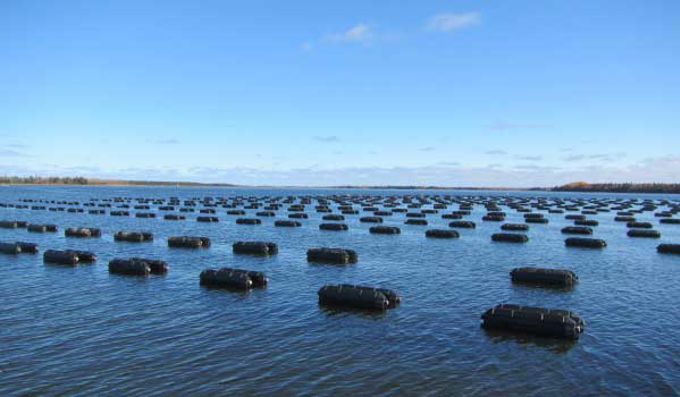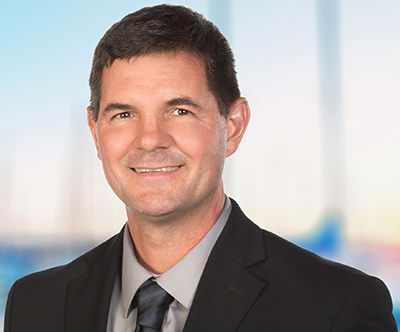
Virginia Riparian Rights and Aquaculture Conflicts
Governor Northam announced creation of the "Governor’s Work Group to Promote Sustainable Growth of Virginia’s Clam and Oyster Economy.”
Oyster aquaculture is big business in Virginia, but conflicts often arise between Riparian Rights and Aquaculture as waterfront property owners push back against expanding oyster farms. The Commonwealth's aquaculture farmers in 2016 sold over 40 million oysters, worth an estimated $35.8 million, making Virginia the top-producing state in the nation.
[1] This business is big, and getting bigger by the day, due mainly to sharply improving water quality in many areas of the Chesapeake Bay and its rivers and tributaries. Large acreages of newly clean water creates a "gold rush" mentality with oystermen scrambling to claim waters before they are claimed by a rival.
Overall, this growth in the industry means employment, tax revenue, tourism, and cleaner water as ever more oysters are added (each oyster filters up to 50 gallons of water per day), but it also, if not properly managed, violates the riparian property rights of waterfront property owners.
Managing Riparian Rights and Aquaculture Disputes
Waterfront property owners object because oyster aquaculture is spreading like wildfire into many of Virginia's most picturesque waterways, where such activity is highly unwelcome and interferes with riparian property rights.
Additionally, as the aquaculture industry expands, new techniques such as the"off the bottom” method of oyster farming are coming into widespread use. Unlike traditional oyster farming, where oysters are tonged from the bottom, or they are grown in cages resting on the bottom, the “off the bottom” cages float on the surface of the water, creating an ugly eyesore. These floating oyster farms often trigger disputes over Riparian Rights and Aquaculture conflicts in Virginia waterways.
The cages are connected together with a system of underwater cables and moored to the bottom with large sea anchors. “Off the bottom” oyster farming is unsightly and it makes the entire water column around one of these operations essentially unusable to the public, leading to conflicts between the oyster industry and their neighbors.
The Governor's Work Group
"A previous governmental work group established by the prior administration in 2015 was given a similar charter. Whatever good may have been done in that previous effort,the main problem remains and has landed right back in the lap of this new work group."
On August 16, 2018, Governor Northam announced creation of the "Governor’s Work Group to Promote Sustainable Growth of Virginia’s Clam and Oyster Economy”.
According to the Governor's press release, the group is to develop consensus-based recommendations to promote Virginia’s aquaculture industry while also addressing the concerns of boaters and waterfront property owners.
Led by Virginia Secretary of Natural Resources Matthew Strickler, it is composed of leaders from the Virginia Senate and House of Delegates, as well as representatives from the shellfish industry, local governments, waterfront property owners, and the conservation community. A previous governmental work group established by the prior administration in 2015 was given a similar charter.
Whatever good may have been done in that previous effort, the main problem remains and has landed right back in the lap of this new work group. The Governor’s Work Group aims to balance Riparian Rights and Aquaculture by protecting waterfront owners while supporting oyster farming growth.
Speaking at the group’s first meeting in August of 2018, Governor Northam said, “Today’s Chesapeake Bay is a new experience to a generation that has known only polluted waters and lost aquatic productivity.
With a healthier Bay, we now have the challenge of managing the many competing uses of the Bay and our rivers—whether that’s farming oysters and clams, providing access for recreational boaters, rebuilding our underwater grasses, or respecting the rights of waterfront property owners. My Administration is committed to working with all stakeholders to finally resolve user conflicts and to grow the Bay economy.”[2]
Recommendations Offered for Consideration By Work Group
Among the many issues that could benefit from the attention of the work group are:
- (1) The absence of free market pricing for oyster leases (artificially low pricing set by statute at $1.50 per acre per year is an example of corporate welfare);
- (2) The absence of a buffer between oyster harvesting locations and incompatible nearby uses, such as residential neighborhoods;
- (3) Strengthening the provisions in current law as to the showing that must be made to demonstrate the lease is in productive use and canceling of leases that do not satisfy the requirement; and,
- (4) Eliminating the ability of a leaseholder to interfere with projects to improve navigation (without regard to whether the project to improve navigation is sponsored by local, state or federal government). Going forward, Virginia must find a sustainable way to balance Riparian Rights and Aquaculture, ensuring growth in oyster farming while respecting waterfront property owners.
[1] Jeff Clabaugh, Washington’s Top News, " Oysters are big business for Virginia agriculture ,” November 7, 2017.
[2] Office of the Governor. August 16th, 2018. Accessed at: https://www.governor.virginia.gov/newsroom/all-releases/2018/august/headline-828653-en.html
